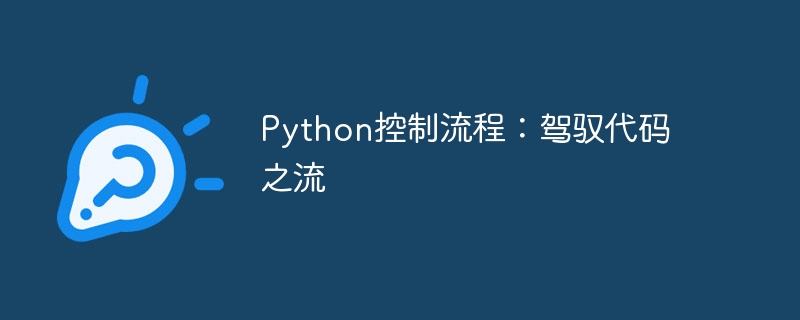Home >Backend Development >Python Tutorial >Python Control Flow: Mastering the Flow of Code
Python Control Flow: Mastering the Flow of Code
- 王林forward
- 2024-03-16 19:49:02686browse

Conditional statements are used to execute different blocks of code based on the value of a conditional Boolean expression. Commonly used conditional statements in python include:
- if-elif-else: Execute different code blocks based on multiple condition checks.
- while: When the condition is true, execute the code block repeatedly.
- for: Iterate over the elements in a sequence or range and execute a block of code.
cycle
Loops are used to repeatedly execute a block of code until a specific condition is met. Commonly used loops in Python include:
- while: When the condition is true, execute the code block repeatedly.
- for: Iterate over the elements in a sequence or range and execute a block of code.
- break: Exit the current loop.
- continue: Skip the current loop iteration and continue to the next iteration.
function
Functions are reusable blocks of code that accept parameters and return results. They enable programmers to organize code and promote code reuse and modularization. In Python, functions are defined using the def keyword.
Application of control process
- User interaction: Use conditional statements to process user input and perform different operations based on different inputs.
- Data validation: Use loops to iterate through data and check whether specific conditions are met.
- Algorithms: Use loops and conditional statements to implement complex algorithms, such as sorting and searches.
- Game development: Use control flow to handle user input, manage game objects, and control game logic.
- Machine Learning: Use loops and conditional statements to train and evaluate machine learning models.
Best Practices in Control Process
- Clearly understand the semantics of conditional statements and loops.
- Use indentation to organize code and improve readability and maintainability.
- Avoid nesting control flows too deeply as this can make the code difficult to understand.
- Use exception handling to handle potential errors in control flow.
- Use functions appropriately to organize code and promote code reuse.
Summarize
Python's control flow mechanism provides programmers with flexible and powerful tools for controlling the execution sequence of code. By mastering conditional statements, loops, and functions, programmers can build complex and efficient programs to handle a variety of tasks. Following best practices is critical to creating readable, maintainable, and reusable code.
The above is the detailed content of Python Control Flow: Mastering the Flow of Code. For more information, please follow other related articles on the PHP Chinese website!

